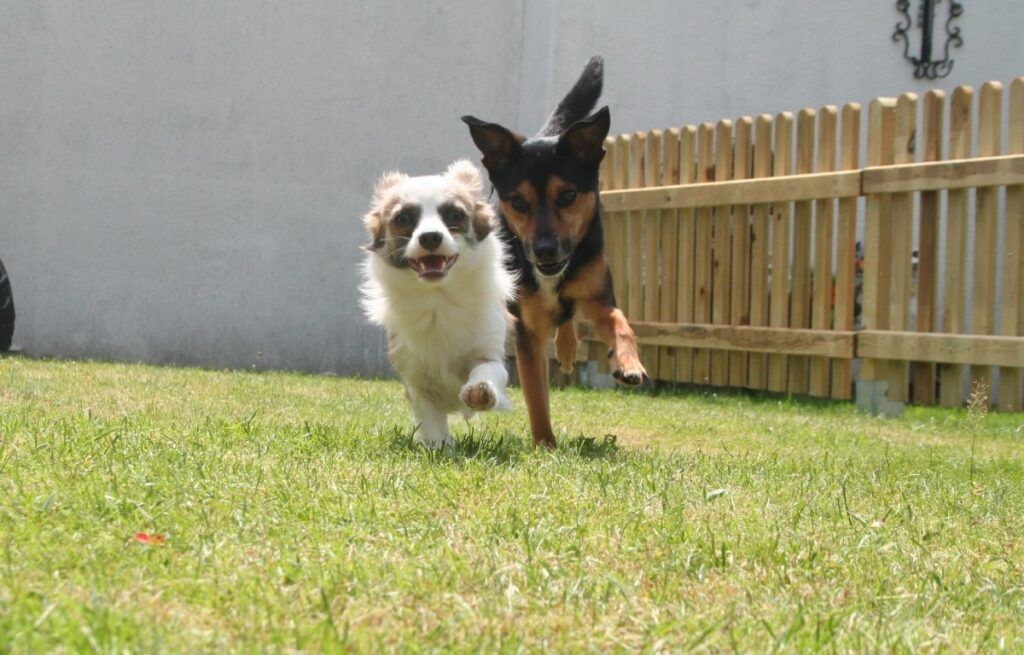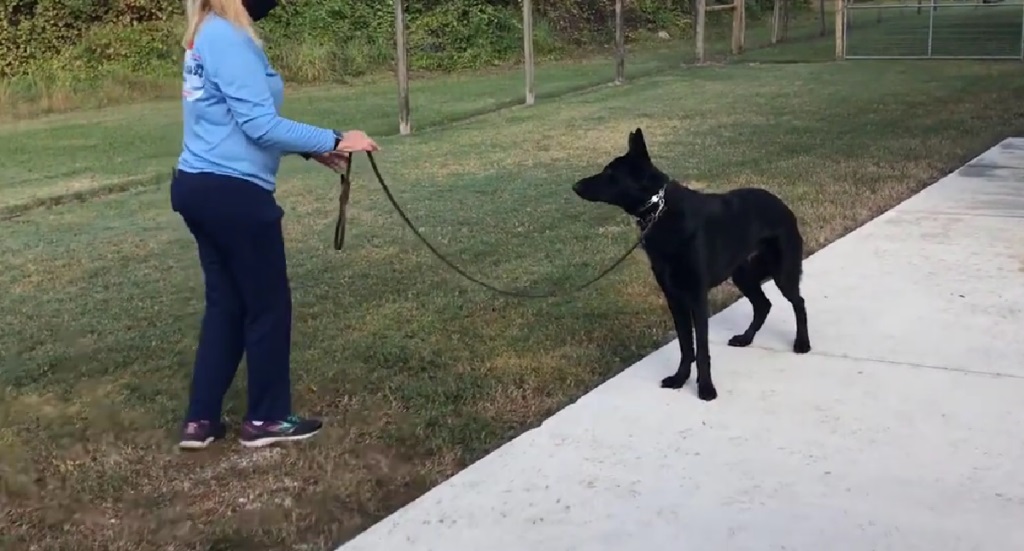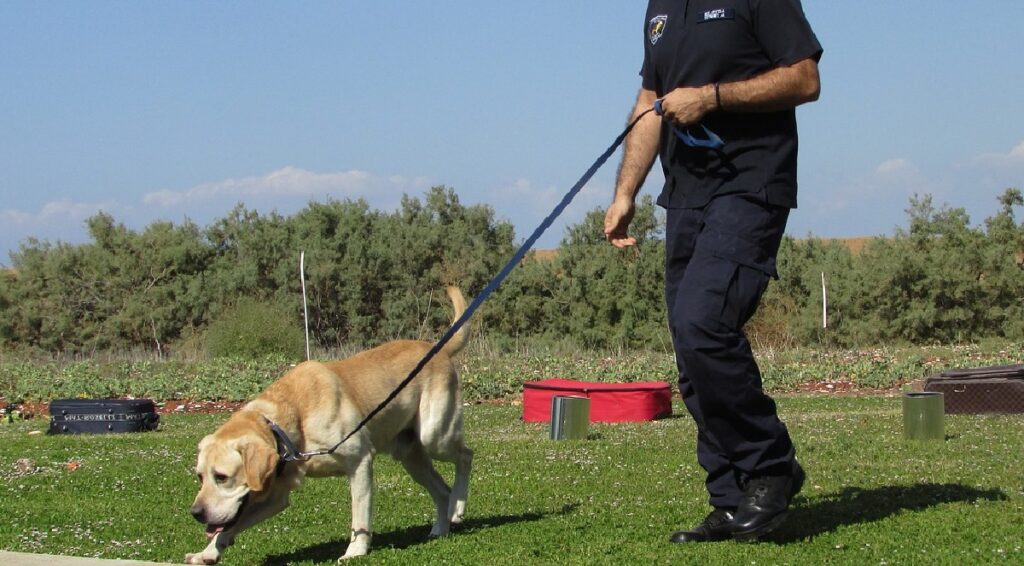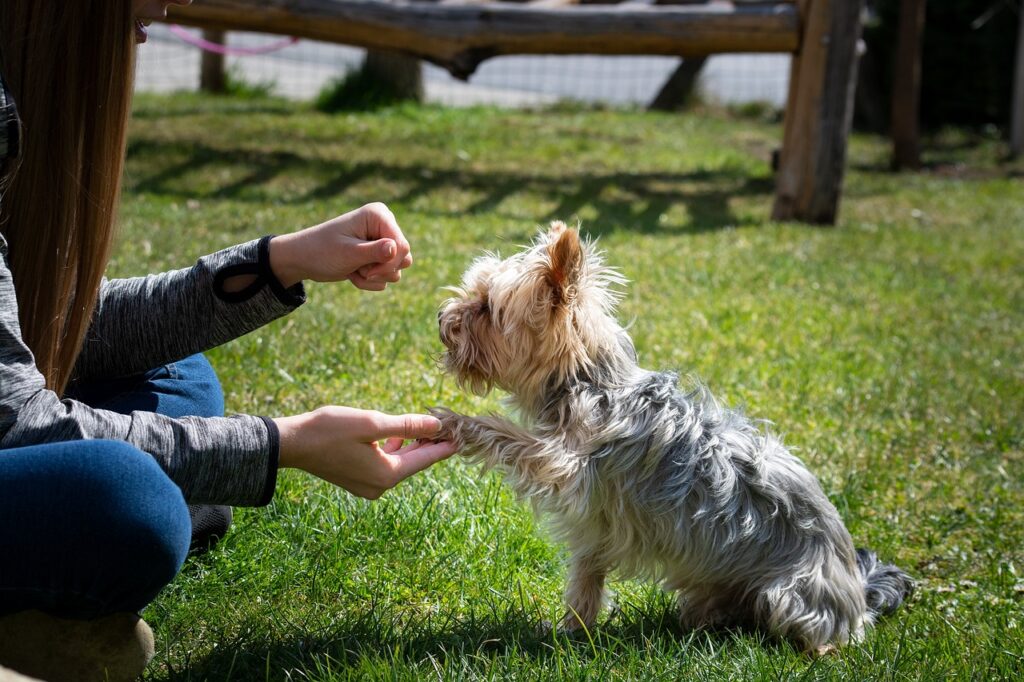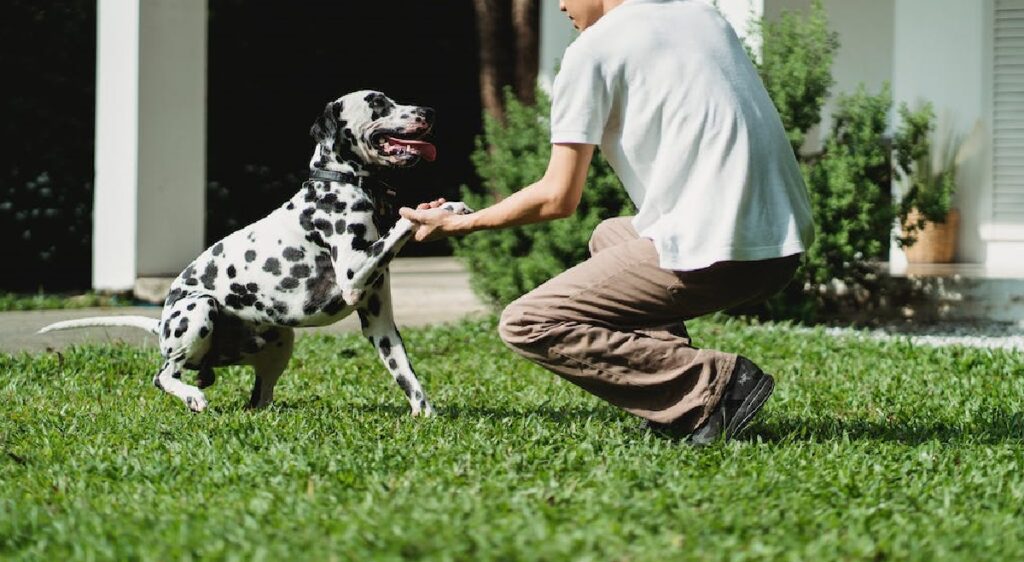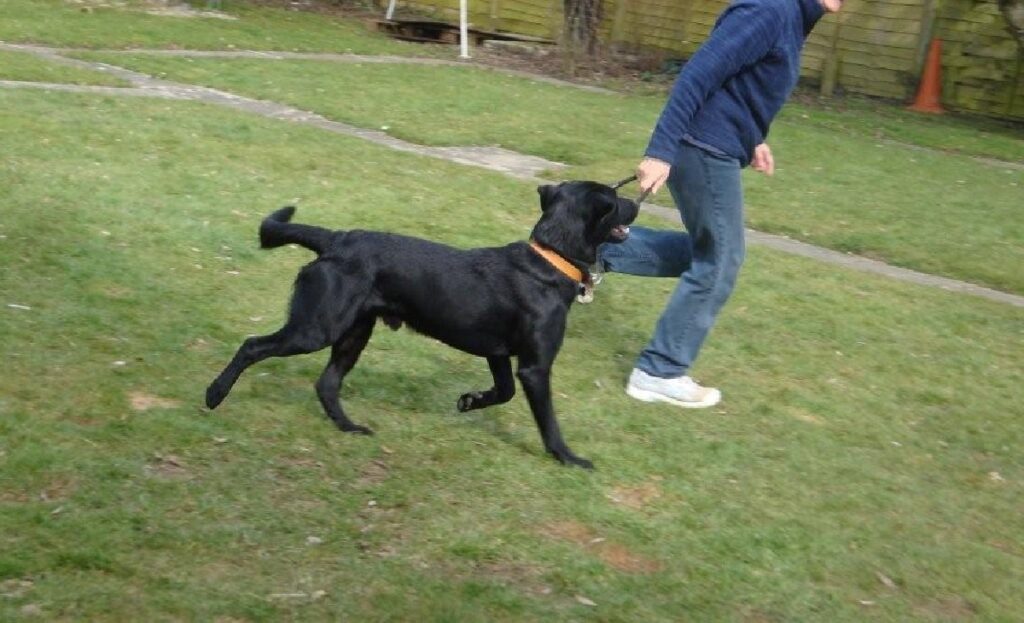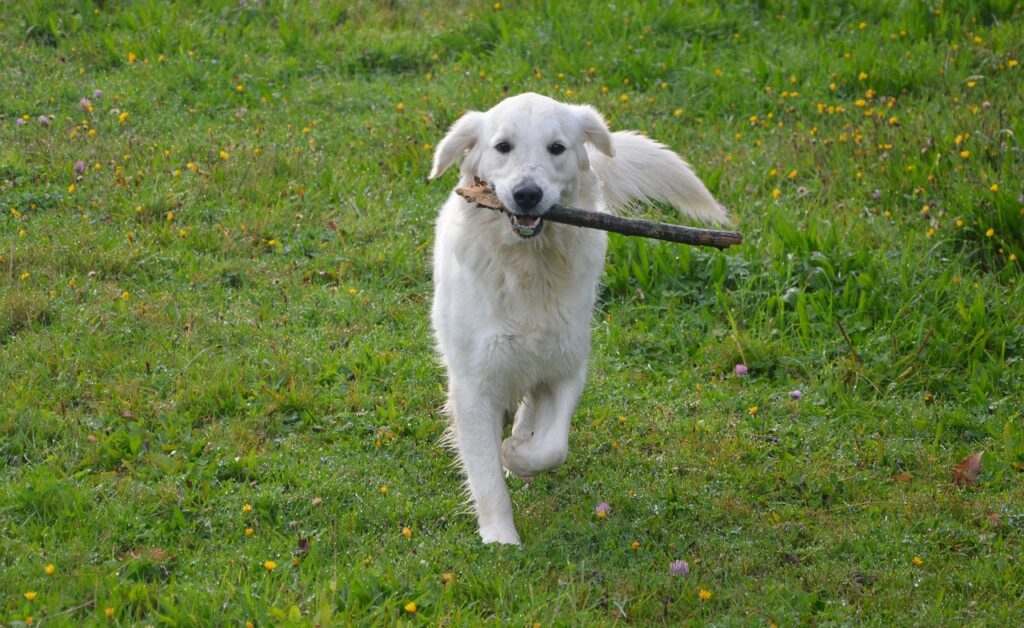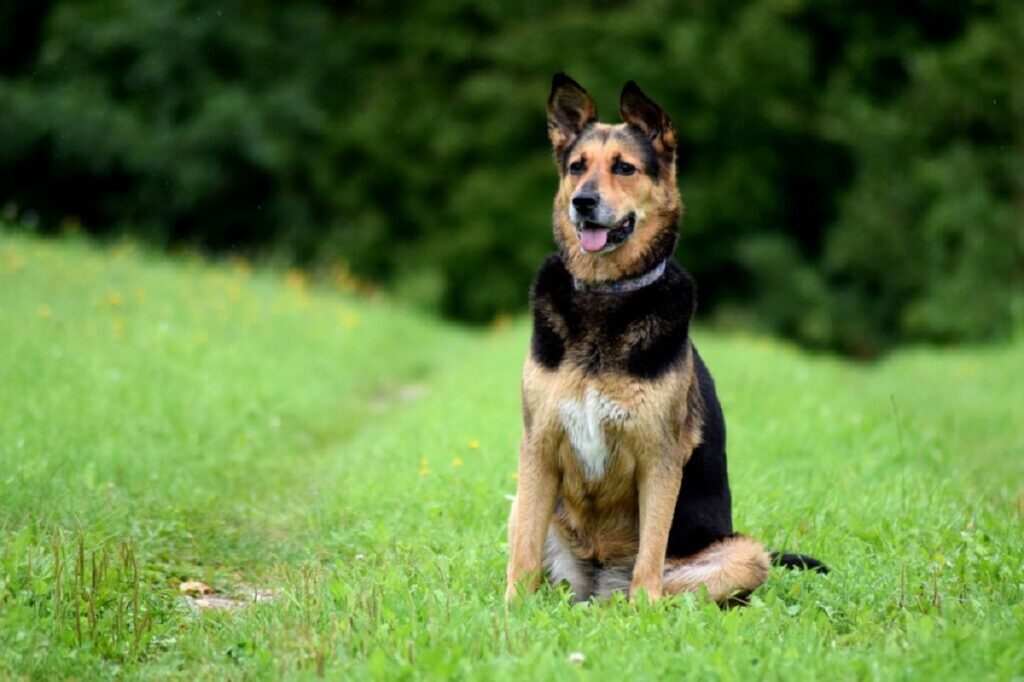A dog bounding freely in the yard brings joy, but ensuring they stay safely within its bounds is crucial. This step-by-step guide provides a clear, effective approach to training your canine companion for reliable yard confinement. Forget expensive fences and stressful tie-outs! We’ll cover boundary training techniques, reinforcement strategies, and common troubleshooting tips, empowering you to create a secure and enjoyable outdoor space for your dog without sacrificing their freedom and your peace of mind. Let’s begin building that invisible fence together.
Your dog is your best friend. And if anything happened to them, your world would completely fall apart—I know mine would.
I’ve boundary trained my three dogs to stay within the yard—even if the gate is wide open—and also to the ground-level floor of my home.
There are a few different ways to boundary train your pup. And it will really come down to what works best for you. Many dogs who learn quickly may just simply need positive reinforcement. Whereas if you have a more stubborn dog—like I do—then you may need to invest in a long leash or even a shock collar.
Importance of Boundary Training
Boundary training is an important tool to teach dogs of all shapes, sizes, and ages. Whether you don’t want your pup entering a certain room. Or you want to keep them confined to your yard; boundary training ensures that your dog isn’t getting into things they shouldn’t or that they aren’t wandering off without your knowledge.
Boundary training is ultimately a way to keep your dog safe. But it also works in your favor if you don’t want dog hair, muddy paws, or chewed furniture in certain rooms of your house. I mean, ideally, you don’t want that in any room of your house—but that’s just the reality of having a dog.
Introduce Your Dog to Physical/Virtual Boundaries
It’s easy to understand why your dog may want to leave the yard. After all, there is a whole world out there for them to explore, filled with other animals, interesting smells, and trash cans filled with leftover food.
One of the easiest ways to keep your dog in your yard is to build a fence. But fences can be expensive—especially if you live on a big property. Luckily, there are a few other cost-effective ways to contain your dog without a fence, with the first being an electronic pet containment system.
An electronic pet containment system is essentially an invisible electric fence with adjustable boundaries that you can customize to suit your yard and how far you want your dog to be able to roam.
Invisible fences come with a remote collar that your dog wears. So when your dog crosses a boundary, they get a gentle vibration through the shock collar to push them back from the boundary line.
How to Train Your Dog to Stay in the Yard
If your dog responds well to training—and you have an unlimited amount of patience—then you could instead go down the old-fashioned training route.
You will need to be consistent with your training. But aside from the money you’ll spend on dog treats, it is the cheapest way to keep your pup contained within your yard. Below are some boundary training steps that you should follow.
Create a Clear Boundary
Creating a clear boundary is the very first step of boundary training. And you’ll want to mark out an area in your yard with chalk or marker flags so both you and your dog know the perimeter.
Leash-Walking Along the Boundary
Once you’ve created your boundary, you then need to leash walk your dog along the perimeter line. During this stage, don’t let your pup cross the line—keep them inside the boundary at all times.
Allowing Crossings, and Immediate Punishments
Once your dog gets used to walking inside the boundary, allow them to cross the line. When they do step over, immediately tell them no or squirt them with water—whatever works best for your dog.
Guiding Back Into the Yard and Rewarding
After your dog has crossed the perimeter, guide them back into the yard and reward them with a high-value treat. I’ve found chicken works great, but whatever you have on hand will do!
Increasing Distractions and Repeating the Process
Over time, increase the number of distractions during your training. For example, you could have a family member walk over the boundary line, which would tempt your dog to cross. Remember to reward your pup for desired behavior and repeat the process until you’re confident that your dog has mastered staying within the boundary.
Once your dog understands the boundary, you can also introduce the “come” command. Let your dog roam the yard without a leash, and call “come” when they get too close to the edge. Of course, when they return to you, reward them with a few treats for being a good boy and repeat until they stay clear of the boundary.
Methods to Train Your Dog to Stay in an Unfenced Yard
There are three main ways to train your dog to stay in an unfenced yard: the perimeter method, the help from a friend method, and the boundary dog training method. Below are ways to perform each of the three methods.
The Perimeter Method
The perimeter method involves commands like sit, stay, and leave it to teach your dog where he can and cannot go. You’ll find step-by-step instructions for introducing the perimeter method to your pup below.
- Walk along the perimeter of your yard with your dog on a leash. While you’re walking, point at the ground so your dog knows where the boundary is—you can also mark it with temporary flags.
- After a few days, stop pointing to the perimeter. Instead, sweep over the perimeter with your arm so your dog knows his boundary line. Your dog should begin to stay within the boundary.
- Once your dog is used to his boundary, walk over to the line and introduce commands. Firstly, have your dog sit at various points at the border and reward him with treats.
- Then practice the stay command by crossing over the line while your dog stays put on his side.
- Begin your daily property line walk again and use the “leave it” command when you get close to the line. He will soon understand that he is to leave anything that is tempting him over on the other side.
- Once your dog has mastered the leave it command, toss treats on the opposite side of the line and use “leave it.” With consistency, your dog will refrain from crossing the line to get to the treats. Just remember to always reward him with even more high-value treats.
Ask for Help from a Friend Method
The ask-for-help from a friend method ultimately introduces distraction during the training process. On a regular day, there will be plenty of distractions outside of the perimeter, so getting your dog used to ignoring them is a crucial part of boundary training. Instructions for this method are as follows:
- If your dog doesn’t already know the basic commands of stay, come, and leave, then teach them before beginning this process.
- Leash your dog and walk along your property line. If your dog tries to cross the long line at any point, gently tug on his leash, or stop walking completely.
- When your dog responds to you, reward him with a treat.
- Get a friend or family member to run across your yard and over the boundary line. If your dog doesn’t chase them, then reward them with a treat. However, if he does try to follow, stop him, and use the leave it command.
- Next, have your friend throw a toy over the perimeter. Use the leave it command and reward your dog with a treat if he doesn’t cross over the line.
- Once your dog seems used to his boundary lines, let your dog off-leash. Throw toys over the line and use the leave it command.
- Remember to reward your dog every time it stops or walks away from the boundary.
The Boundary Training Method
This training method starts indoors, teaching your dog how to recognize flags that will soon map out their yard perimeter. You will need a clicker—clicking the button and rewarding your dog every time they perform a desired behavior—and some flags that you can find at a local hardware store. Here is how to perform this training method:
- Place two flags indoors, and when your dog goes over to explore them, click. When your dog touches a flag with his nose, click and give him a treat.
- Move the flags further apart and walk with him between them, clicking and rewarding when he touches them with his nose.
- Name the flags as “border,” so your dog recognizes what the flags are—this will come in useful later.
- While outside, place the flags ten feet apart where you’d like the border to be. Walk with your dog on a leash along the line, saying border as you go. Click and reward each time your dog touches a flag.
- Practice off-leash, still rewarding each time your dog touches a flag. Once he seems to understand what the flags are, spread them further apart.
- Overtime begin to take flags away, clicking and rewarding each time he doesn’t cross over the boundary.
Reasons to Keep Your Dog within the Yard
A yard allows your dog the freedom they need to run around, play, do their business, and just enjoy some time outdoors. But why is it important to keep your dog contained?
Well, there are a few reasons which I’ve listed below—some of which could be lifesaving.
- Stops them from coming into contact with aggressive dogs
- Prevents them from running into busy streets and getting hit by a car
- Ensures that you know where your dog is at all times
- Means your dog can’t walk off and get lost
- Can stop unwanted barking at animals, people, and cars
Final Training Tips to Remember to Keep a Dog in the Yard
If you’re gearing up to train your dog to remain within your yard, then these following training tips will help you throughout the process.
Prepare for Accidental Escapes
Some dogs will take longer to get the hang of staying within the boundaries. Hunting dogs, for example— who have it ingrained into them to hunt—will still get tempted by squirrels, cats, and other animals who pass by your yard—and trust me, I know because I have three Dachshunds.
Accidental escapes will happen, but continuously practice the come command and remain calm at all times—panicking never helps any situation. It’s also wise to have your contact details securely attached to your dog’s collar so that if they do escape, someone can easily trace them back to you.
If you find your dog trying to dig its way under your fence, then you’ll also need to introduce training to prevent this behavior.
Consistency Is the Key
Training dogs takes time and consistency. And they aren’t going to learn the boundary overnight. Schedule 20 minutes a day—numerous times a day if you can—to walk the entire boundary of your yard with your dog, rewarding them when they stay within the perimeter.
Be Patient
Dog owners know how important it is to be patient—even though it can seem impossible at times. Getting angry at your dog isn’t going to get you anywhere. So just remember that they’re trying their best, and take a breather if you become overwhelmed.
FAQs
How To Keep Your Dog Within Its Yard/Boundary?
The following are ways to keep your dog within your yard:
- A physical dog fence with a locked gate
- A remote training collar that creates an invisible fence
- Consistent training using commands, a clicker, and repetition
Why Do Dogs Keep Running Out of the Yard?
There are a few reasons why your dog may try and run out of the yard, and they include boredom, sighting of potential prey, their mating instinct, or because you’ve left the house and your pup is trying to find you.
Do Invisible Fences Work To Train a Dog?
Many pet owners feel that invisible fences are a great—and cheaper—alternative to a physical fence. Training your dog with an invisible fence will take time and patience. However, the results can be positive and effective in keeping your dog within your yard.
Can a Dog Get Injured From an Invisible Fence?
There isn’t a 100% guarantee that your dog can’t get injured from an invisible dog fence. And here are some problems that could cause injury while using an invisible dog fence:
- Invisible fences cause or increase anxiety and fear
- Its collar can irritate your pup’s skin
- Over time your dog may build up an immunity to the shocks meaning they can escape the yard and run into danger
- If the e-collar ran out of battery, then your dog would be able to leave your yard.
Final Thoughts
My dog’s safety and overall well-being is the most important thing to me, which is why I’ve dedicated hours and hours of my time to training. Keeping my dogs in my yard gives me the peace of mind that they’re safe no matter where I am. And I think it is crucial that all dog parents take similar steps.
Whether you opt for a physical railing, an invisible fence, or consistent training, training your dog to stay in your yard will ultimately keep them out of harm’s way.
Training a dog to stay in the yard takes patience, consistency, and positive reinforcement. By establishing clear boundaries with a physical or invisible fence, combined with reliable recall and reward-based training, you can create a safe and enjoyable space for your dog. Remember to address any underlying anxiety or behavioral issues that might contribute to escaping. With dedication and the right approach, you can achieve the peace of mind of knowing your dog is secure and happy within the confines of your yard.


